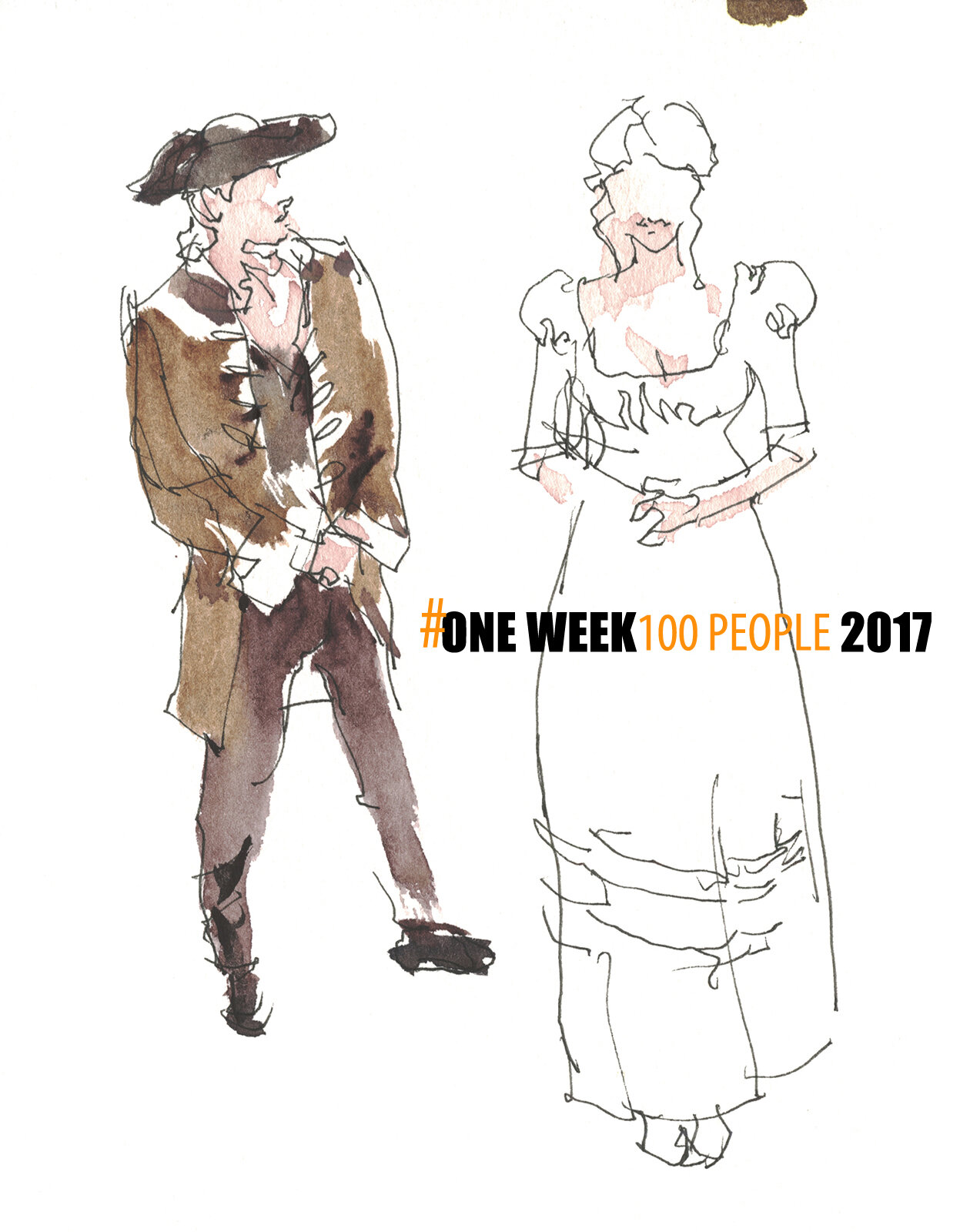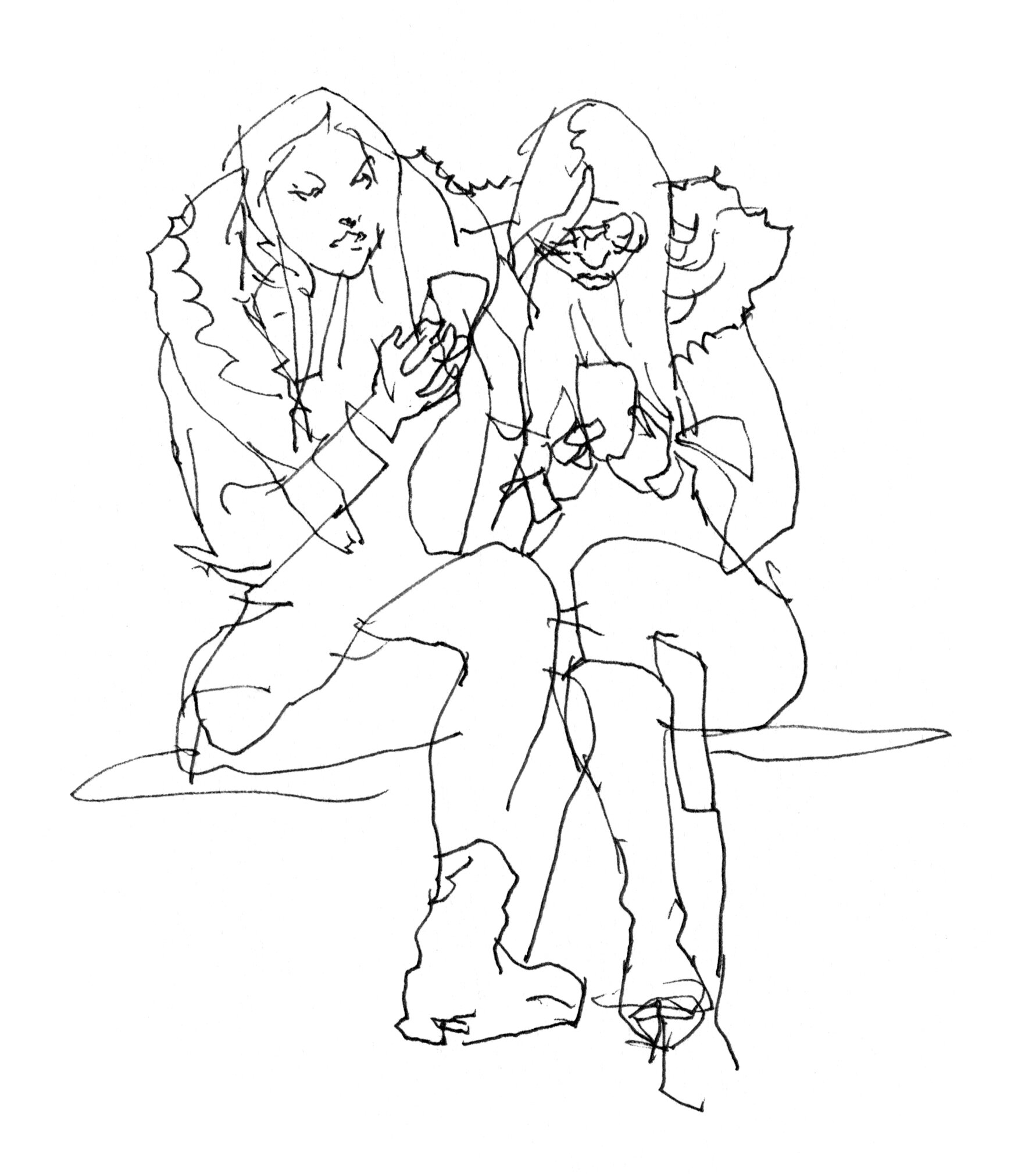Ep 23 - Evolving as an Artist with Marc Taro Holmes
In this episode, I speak with oil painter and urban-sketcher, Marc Taro Holmes, about his evolution over the years as an artist.
Marc worked in the early gaming industry, when both games and design programs were rudimentary. Later, as an urban-sketcher, he started the Citizen Sketcher blog, led numerous workshops, wrote several books, and inspired countless artists with his annual events - OneWeek100People and 30x30 Direct Watercolor.
Over the past few years, Marc has retreated from social media, and started using oil paints on canvas in his home-studio. What caused this shift? What do oil paints offer him that watercolors do not? Does he miss painting outdoors? In finding answers to these questions, I learned that Marc’s story is one of continuous evolution, motivated by his interests, surrounding influences, and life circumstances.
Listen on your choice of streaming service
Spotify | Apple | PocketCasts | Google | Web | Gaana
Links
Marc’s work on Instagram
Marc’s blog - Citizen Sketcher
Free instructional cheat-sheets on Marc’s website
Summary Transcript
04:40 Nishant asks about how adapting to the pandemic affected Marc's work.
Nishant asks about Marc's early interest in art. When did you start drawing or making art as a way to express yourself?
"On my 19th birthday, I started drawing. I know the exact day because I had never wanted to draw before that, I had a mental block."
"There's something about that me that flips a switch, and I go from one topic to another every 5 or 7 years. Intense focus for several years, and then it has to completely flip on its head."
"I went to art school to become an illustrator and do book covers. The world changed in the meanwhile and it became videogames. Then at some point I realized there was a huge skill gap, and I just went 100% into going outside and drawing on location and learning everything you could learn from life."
What attracted Mark to drawing sci-fi scenes?
What kind of art did Mark make during his BFA, and what did he envision himself doing as he went into his career?
22:20 Nishant asks about Marc's entry into making video games, and they talk about the formative years of the industry.
"If you could draw, and you were computer-literate, they needed you at that time. Everyone I knew who could draw, went into videogames. Everyone I knew who couldn't, went into graphic design."
Marc talks about how the early goals for the gaming industry were to achieve realism, in appearance as well as physics. And Nishant mentions that the recent turn to 8-bit games - especially on mobile platforms - indicates that now people want simpler games driven by gameplay rather than realism.
33:30 Nishant asks how Marc turned to urban sketching and drawing from life, even when surrounded by the culture which considered drawing from imagination to be superior.
Marc asks how SneakyArt works for Nishant, if it is limiting as a title now that he is well-known.
They talk about sketching alone versus sketching with people, how that affects our 'bravery' in a public space.
"You borrow on the confidence of other people, who are incidentally also borrowing confidence from you being there. It's a loop which is feeding itself."
- Nishant, on the magic of sketching with other people outdoors.
Marc shares how urban-sketching hangouts are a rare space where you don't need to feel self-conscious about wanting to draw at every opportunity.
53:15 Nishant asks about how Marc started his #blog Citizen Sketcher.
Marc explains how the early internet was a little about concealing one's real identity, or maybe everyone was just excited to don a second, online identity. 'Citizen Sketcher' takes from the phrase 'citizen journalism'.
Did the title 'Citizen Sketcher' give Marc a sense of responsibility or impose a theme to his work?
Marc talks about how the blog and a sense of actual readership gave him an impetus to do more of the things he liked to do, to explore new things, and to challenge himself.
"Everything in my life is about finding something that works for me and then get obsessed with it."
Nishant resonates with the idea of needing a catalyst to break out of one's inertia. Marc mentions the important prevailing fear, that we're going to suck.
"You need something to help you through the time when you hate your drawings."
- Marc, referring to his pseudonymous blog and Flickr identity.
They talk about anonymity on the early internet, the idea of having an alternate persona, and being able to find a community of shared interests even if it is arcane or otherwise not popular in your physical vicinity.
67:55 Nishant asks about how Marc conceptualized and started #OneWeek100People.
Marc explains how quantity is more important than quality in the early stage of practice, which precedes what he describes as the "judgment phase". Time limit and quantity goal are useful metrics which help us put in the work to complete the 100 people goal. And this feeling of winning and keeping score is useful to motivate people.
Nishant adds that people put too high a premium on the act of taking out a sketchbook and making a drawing. And allowing ourselves 10-15 minute drawing sessions, even for just a week-long project, is a good way to imbibe the lesson that being good at art simply takes work, and is achievable, and is not a matter of 'genius'.
"The idea of genius is completely false, and created by artists ... who are gatekeeping."
Marc talks about drawing people coming up an escalator and describes them as a "captive audience". Nishant compares this to drawing people at a traffic light, describing them as instantaneous subjects because he does not have the time to hesitate.
84:20 Nishant asks about Marc's other big project #30x30DirectWatercolor.
30x30 Direct Watercolor is a project Marc does with Uma Kelkar every year, asking participants to make one watercolor painting every day for 30 days.
Marc explains how the 30x30 event is like a marathon versus OneWeek100People being a sprint. Talks about the value of "exhausting your own resistance".
Nishant talks about the value of building momentum, which a daily practice offers.
They discuss the various ways people motivate themselves to complete the OneWeek100People and 30x30Watercolor projects. Nishant asks about Marc's paintings inspired by painters he admires - Gauguin and Rousseau.
Nishant shares how having a project to complete, and earning a reward at the end of it, is a great way to allow oneself the time to do things for 'vanity' or 'pure interest'. These are categories that we often guilt ourselves out of indulging in, especially as freelance artists. Having a weekly newsletter about artistic self-education compels Nishant to seriously explore his interests and develop well-considered thoughts around them.
104:15 Nishant asks about Marc's interactions with people who participate in these projects, and how he helps them to go forward.
Marc stresses on the importance of organic group interactions.
Nishant asks about Marc's experiences teaching as a workshop instructor, referring to also the free downloadables on his website.
Marc considers urban-sketching workshops to be superior to a lot of expensive art retreats in exotic locations, and shares reasons why it works better for participants as well as instructors.
"I call it my graduate degree in drawing."
- Marc, referrring to his involvement with USk.
Marc started with only lines, then moved to watercolor and line, and then to direct watercolor - an evolution that he credits to brave steps he took from being part of the USk community.
117:45 BREAK
122:40 Was there a change in the kinds of things you regarded as subjects, the more you went into urban sketching?
"The length of my drawings didn't change, I always did these short sessions, but I was gradually able to do more with those sessions... The ability to do so much more, with the same amount of time, that's what I got out of urban sketching."
Marc talks about the ideas he's taken from other artists like Jeremy Lipking and Joseph Zbukvic.
Nishant refers to Marc's direct watercolor lesson framed as "Tea, Milk, and Honey".
130:11 Nishant asks a listener question from Russ and Kate - Why did Marc move to oils and away from urban-sketching?
"It's really important to me that people not think of it as a hierarchy. I try not to think that doing oils is 'moving up' in the world." - Marc, referring to his migration from watercolors to oil paints.
"I said to myself, I'm going to spend a year, and conduct an experiment with these oils. And become a gallery artist. It did not work, I did not just get into galleries. But what happened was that I fell in love with the texture."
"Watercolors are excellent for printed material, on the screen and in your hands in a book. But on the wall, at arm's length, they didn't have the same physical presence. And I think that's because of the texture. The oil paintings I'm doing are really textured. It's a rich 3-dimensional sculpted surface."
"You can pick up the color with your knife, pick it up and put it in another place. It gave me new powers, new capacities. Suddenly I could alter the composition and do it very quickly. And do it weeks later, come back and make this dramatic change. So oils have more power, than watercolor."
"Oil is easy. When you mix the colors, it's exactly the color you will see. With watercolor you don't know the color until it dries."
They talk about artistic evolution, how it can be jarring to people who know you by your earlier work, and Marc talks about backpedaling on his own teaching advice over time.
"There's so many more powerful ways to do an image than doing it by hand, so if you're gonna do it by hand you have to bring something intentional to the table."
- Marc, on the idea of drawing by hand in a multimedia age.
Nishant talks about "form follows function" and argues that when multiple forms are available, there has to be a reason to draw something over taking a picture.
"I have to offer something unique, not necessarily better, but something that can hold its own ground that other media cannot."
- Nishant, on the why of drawing.
Marc compares oils to digital art, in the sense that you can change anything and have flexibility. But what it offers over watercolor and sketch art is texture, creating an object that has inherent value.
Nishant talks about the value of surface texture, and tactile feedback from a brush and a pen.
Nishant talks about how large oil paintings are different things when you regard them at different distances. And coming closer breaks them into their 'pixels' - the individual blobs of paint and strokes that constitute the scene, and at scale create the objects we recognize.
160:18 Is there a specific reason your oil paintings feature non-urban, uninhabited landscapes?
"The purpose of doing these paintings is to create a physical object that makes this mental escape. You zoom into the painting and you're transported to this alternate world."
Nishant brings up how Marc has become a social media recluse, and asks if there are deliberate reasons behind that.
They discuss the business of being an artist, and how social media followings increase when you have something to give or teach. But every artist must consciously decide if they are artists or art-instructors.
They debate if it's easier or more difficult to be an artist today, considering social media feeds, the short-term attention spans encouraged by apps, and the financialization of internet content.
What do you think of this conversation? Share your thoughts in the comment section.
If you would like to support this show, and my work as an independent podcaster, buy me a coffee.







